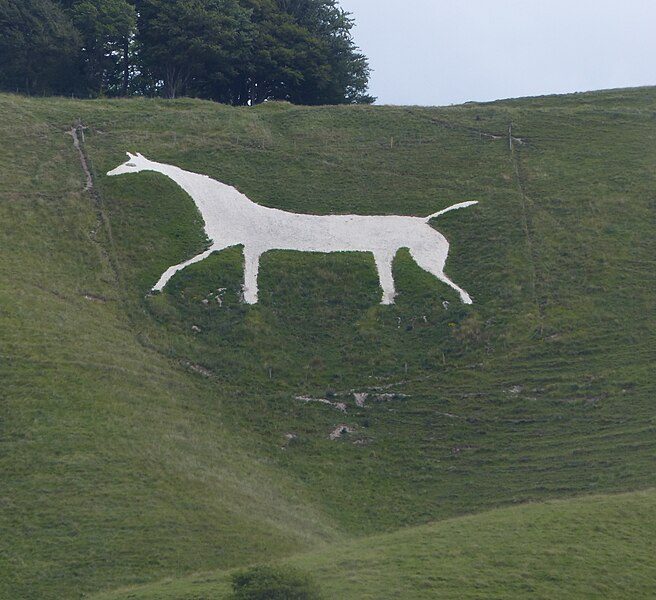Summary
Introduction to the Pewsey White Horse
The Pewsey White Horse is a charming historical landmark, etched into the rolling hills of Wiltshire, England. This captivating hill figure, cut in the shape of a horse, fascinates with its rich heritage and mystical allure. Nestled in the North Wessex Downs, it commands a breathtaking view over Pewsey Vale, framing the landscape with ancient artistry. The figure’s precise origins remain shrouded in mystery, although it is widely recognized as a significant cultural symbol, reflecting the region’s deep historical roots.
Get your dose of History via Email
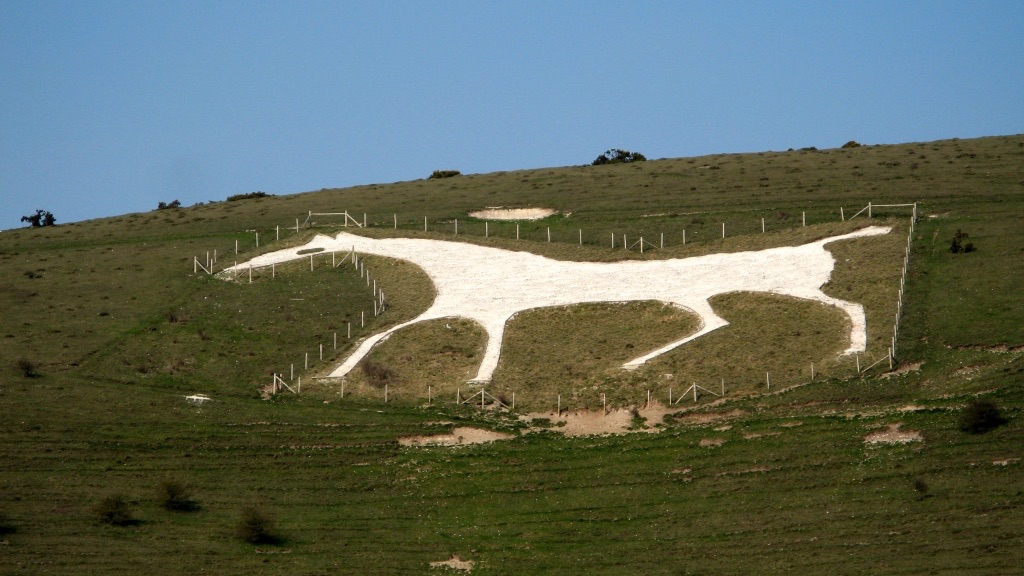
Cultural and Historical Significance
Ingrained in local folklore, the Pewsey White Horse stands as a beacon of national pride and historical continuity. It tells a silent tale of past societies and their spiritual connection to the land. Beyond its visual splendor, the White Horse serves as a pivotal link to Britain’s past, especially regarding its association with nearby historic sites like Stonehenge and Avebury. These connections furnish context, deepening appreciation for England’s prehistoric landscape and its ongoing preservation.
Modern Preservation and Tourism
Today, the Pewsey White Horse has become more than just an echo from the past. It’s an active part of the community and modern culture too. Efforts to preserve the hill figure highlight the balance between maintaining history and facilitating contemporary visitation. The site attracts tourists globally, drawn by the allure of ancient history and the area’s natural beauty. It has galvanized locals and historians alike into action, ensuring its well-being for future generations to enjoy and learn from.
Historical Background of Pewsey White Horse
The Origins and Discovery
The Pewsey White Horse stands as a sentinel of history, carved into the slope of Pewsey Hill near the village of Pewsey in Wiltshire, England. Discovered in the 18th century, this unique geoglyph predates its more famous cousin, the Uffington White Horse. Its initial purpose is believed to be akin to that of other hill figures that dot the English countryside, possibly serving as a tribal symbol or a territorial marker. The Pewsey White Horse links us to the people who once revered these lands.
Restoration and Redesign
The Pewsey White Horse has undergone several restorations since its original form. In 1937, a significant redesign altered its appearance to commemorate the coronation of King George VI. As a result, unlike older hill figures which might have weathered and eroded over time, Pewsey’s horse maintains a crisp outline. It has ensured the figure’s visibility from afar, as well as its continued significance as a cultural icon.
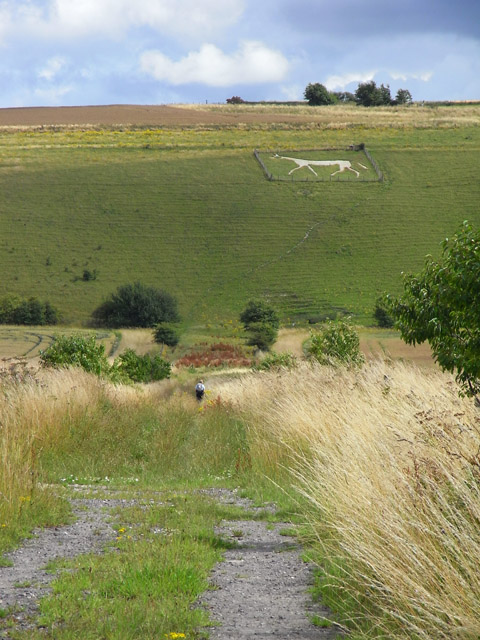
Archaeological Importance
Scholars and archaeologists regard the Pewsey White Horse with great interest, as it offers insight into prehistoric England’s artistic expressions. Studies suggest that while the horse is an emblem of historical significance, it also reflects the evolving relationship between humans and their environment. The careful upkeep of the figure reflects respect for this heritage, while also filling in gaps of our understanding concerning past human practices and beliefs.
Today, the Pewsey White Horse stands as a beloved local emblem, connecting the present to an enigmatic past. It draws onlookers not just for its arresting visage but also for the sweeping vistas of the Vale of Pewsey it overlooks. This vantage point offers a tangible connection to a landscape that has cradled human activity for thousands of years.
For the local community, the Pewsey White Horse is more than just an ancient figure on a hill. It manifests in festivals, literature, and the collective memory of the area. Its silhouette is etched not only on the land but in the hearts of those it watches over. Across the ages, it has become a symbol of enduring legacy and regional pride, reminding all who see it of the indelible marks we leave behind.
The Discovery of Pewsey White Horse
First Records and Recognition
The enchanting Pewsey White Horse first caught public attention in the late 18th century. Local folklore suggests that the figure was cut to commemorate a victorious horse race. True origins elude us, yet, it’s evident that it captured hearts from inception. Then, the villagers viewed it as a symbol of local pride, rooted deeply in the shared consciousness of the community.
Historical Accounts and Documentation
Documents dating back to the early 1800s make mention of the Pewsey White Horse. They recall a figure already entrenched in the landscape and its lore. Despite lacking concrete evidence of the creator, the prevalent assumption pinpoints a noble influence in its making. This aligns with practices of the period, wherein gentry often initiated such ventures.
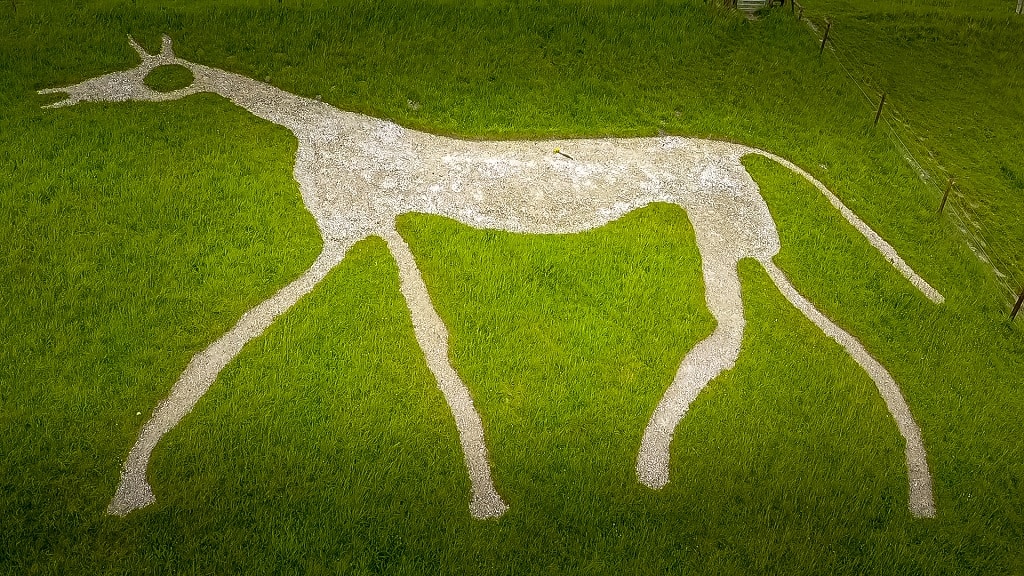
Rediscovery and Renewed Interest
Over time, vegetation threatened to obscure the Pewsey White Horse. However, in the 20th century, fresh interest revitalized efforts to restore its prominence. The community came together, removing overgrowth and reinstating the figure’s visibility. This rediscovery led to a strengthened local identity around the horse and an appreciation for historical preservation.
What’s more, the Pewsey White Horse’s revitalization brought curious tourists to its vista. They come to marvel at the historical artistry that has withstood the test of time. It consequently spurred numerous conservation efforts, ensuring that future generations could share in this wonder.
Today, the Pewsey White Horse stands as a testament to the enduring nature of cultural heritage. To the casual observer, it’s a striking landmark. To the keen historian, it’s a valuable clue to the region’s past. It embodies the collective effort of numerous generations to honor and uphold a tradition spanning centuries.
Cultural Significance, Dating Methods, Theories and Interpretations
Enduring Cultural Significance
The Pewsey White Horse has deeply entrenched itself in the local culture of Wiltshire. As an impressive landmark, it has been a source of community pride for centuries. The figure influences local traditions and annual festivals, celebrating the history and myth that surround it. Beyond community events, the image of the horse appears in art, literature, and regional branding, reflecting its role as a cultural icon.
Innovative Dating Techniques Employed
Determining the age of the Pewsey White Horse has been challenging. However, scientists have used cutting-edge dating methods, such as optically stimulated luminescence (OSL), to gauge its creation. OSL measures the last time soil particles were exposed to sunlight, providing a benchmark for when the figure was initially carved. Results have led to debates, as estimates vary, but they still offer a fascinating glimpse into a prehistoric past.

Theories Behind the Creation
Multiple theories abound regarding the horse’s origins. Some suggest the figure represents a tribal symbol, while others posit it might commemorate a significant historical event. The lack of direct historical records has opened the door for these speculations. Each theory enriches the narrative of the Pewsey White Horse, adding layers of interpretive depth to its study.
Interpreting the Pewsey White Horse’s significance reveals varied insights. For some, it signifies a pre-Roman civilization’s artistic skill. Others view it as a relic from a lost legend, possibly linked to King Alfred or other local tales. It’s vital to note that such interpretations hinge on intertwining the horse’s mystique with the region’s broader history, filling in gaps where fact fades into legend.
Moreover, comparisons with other geoglyphs in the region have informed these interpretations. These include similarities in design and positioning to other hill figures, such as the Uffington Horse. These comparisons offer a wider lens through which to analyze the Pewsey White Horse, inviting us to consider a broader, interconnected network of prehistoric artistry across the English landscape.
Conclusion and Sources
In conclusion, the Pewsey White Horse remains a captivating enigma in the English countryside, an emblem of the intertwining threads of history, culture, and legend. Dating efforts continue to shed light on its mysterious past, while local and scholarly interest ensures its legacy endures. As we look upon its form, etched into the chalk hillside, we can’t help but be drawn into the depths of our imagination, contemplating the lives and stories of those who came before us. The Pewsey White Horse stands resilient, a silent witness to the passage of time, inviting each onlooker to add another layer to its enduring tale.
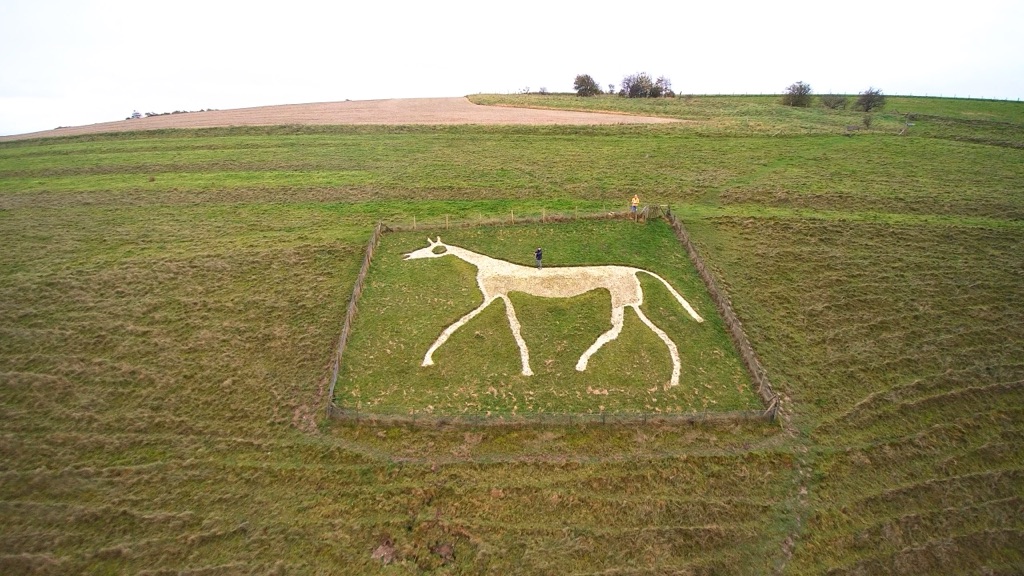
For further reading and to validate the information presented in this article, the following sources are recommended:
Or you can check any of these reputable archaeological and historical texts:
English Heritage. (n.d.). Uffington White Horse and its Landscape.
Historic England. (n.d.). The History of Prehistoric Hillfigures.
National Trust. (n.d.). White Horse Hill. Retrieved April 12, 2023
Wiltshire Council. (n.d.). Wiltshire and Swindon Historic Environment Record.
Astill, G. (2004). Anglo-Saxon England: The Landscape of Towns. Journal of Historical Geography, 30(1), 61–67.

